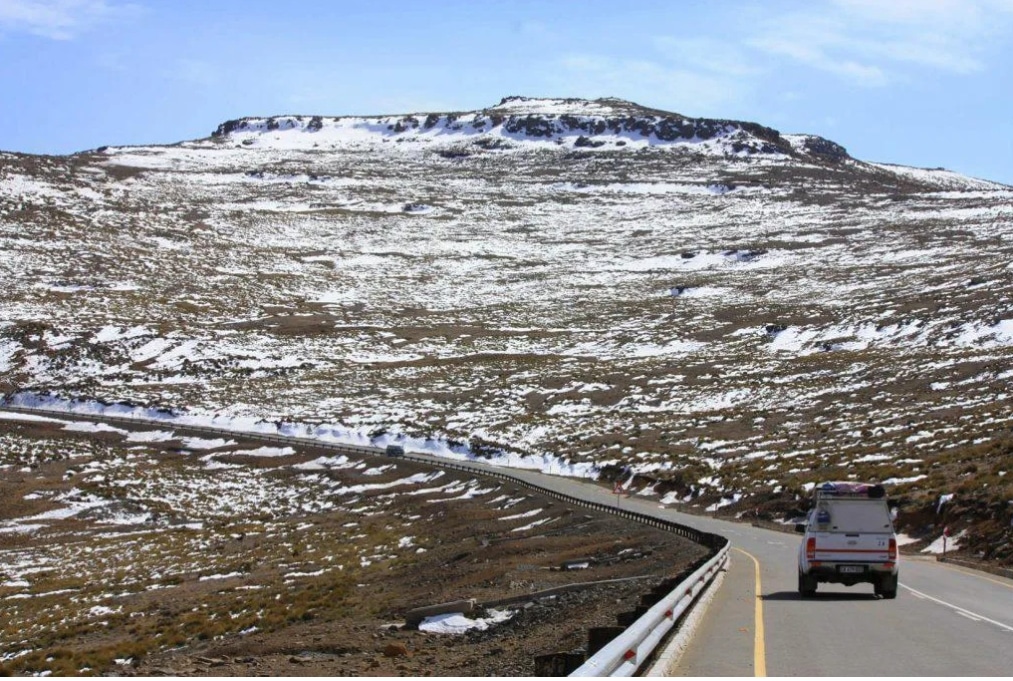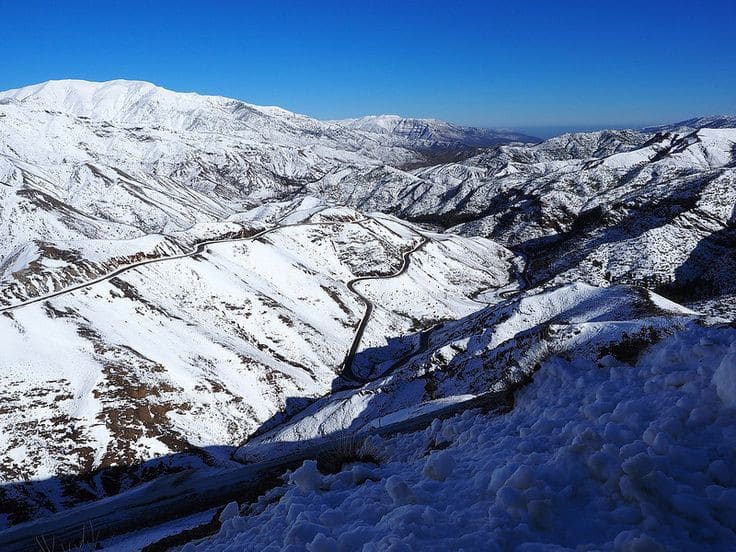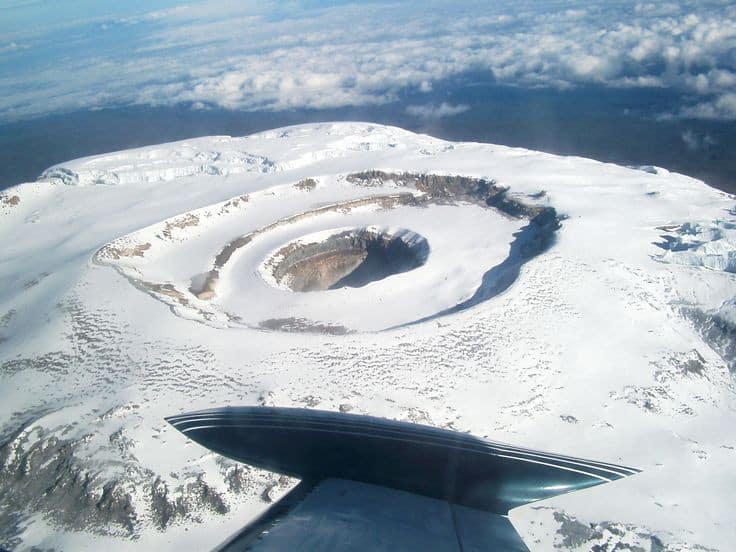When most people think of Africa, they imagine scorching deserts, tropical rainforests, and savannahs teeming with wildlife. It’s easy to assume that the continent is universally hot, but Africa’s climate is far more diverse than the stereotype suggests. So, does it snow in Africa? Surprisingly, the answer is Yes! Snowfall occurs annually in several regions across the continent, thanks to its varied geography and climate zones.
I’ve curated a list of 5 African countries with specific destinations that experience snowfall for your reading delight below.
Here are the five.
Countries and locations that experience snowfall in Africa
Africa’s snowy landscapes are found in mountainous regions and high-altitude areas. Here’s a closer look at some notable markings:
Lesotho: The Kingdom in the sky
Lesotho is a small country situated at high altitudes, earning it the nickname “The Kingdom in the Sky.” Its mountainous terrain ensures that winters from June to August are cold enough for snowfall.

The Maluti Mountains frequently receive snow during this period, with an average of 5–10 snowfalls annually. Snow cover can last up to 10 days during mid-winter, especially on south-facing slopes where temperatures remain colder.
Snowfall plays an important role in Lesotho’s water supply by replenishing rivers through snowmelt. However, it also presents challenges for rural communities that face blocked roads and disrupted farming activities during heavy snow events. Despite these difficulties, snowfall is often celebrated for its beauty and uniqueness. Villagers marvel at these snow-covered land areas while adapting their daily routines to cope with winter conditions.
South Africa: The Drakensberg mountains

South Africa is another country where snow occurs regularly during the winter months (June to August). The Drakensberg Mountains are particularly well-known for their snowy peaks during this season. Higher elevations within this range receive consistent snowfall, with accumulations deep enough to support winter sports like skiing and snowboarding at Tiffindell Ski Resort—the only ski resort in South Africa.
Snowfall frequency varies across different parts of the Drakensberg Mountains. Lower elevations may experience light flurries that melt quickly, while higher peaks can see several inches of snow that persist for days or weeks. Occasionally, cities like Johannesburg experience rare snowfall events that captivate residents and spark excitement across social media platforms.
For local communities living near the Drakensberg Mountains, snowfall is both a challenge and an opportunity. Farmers must adapt their practices for colder temperatures and potential crop frost damage. Meanwhile, tourism thrives as visitors flock to witness South Africa’s winter wonderland, which is in stark contrast to its sunny beaches and wildlife-filled savannahs.
Morocco: The Atlas mountains

The Atlas Mountains stretch across Morocco and neighboring countries in North Africa, offering breathtaking views of snowy peaks during winter months (November to March). The High Atlas region is particularly renowned for its snowfall due to elevations exceeding 4,000 meters (13,000 feet). Jbel Toubkal, the highest peak in North Africa, receives significant snow accumulation each year.
Snowfall in Morocco varies depending on altitude and seasonality. Lower elevations may experience light dustings that disappear within hours, while higher elevations can see accumulations exceeding two meters during severe storms. Skiing enthusiasts often flock to resorts like Oukaïmeden near Marrakech to enjoy winter sports against a backdrop of stunning mountain vistas.
Snow is culturally significant for Moroccan communities living near the Atlas Mountains. Snowmelt provides vital water resources for agriculture in surrounding valleys—a lifeline for farmers who depend on irrigation systems fed by mountain streams. Heavy snowfall can isolate villages for weeks at a time, prompting residents to rely on emergency aid during harsh winters.
Uganda: Rwenzori mountains

Uganda’s Rwenzori Mountains, often called the “Mountains of the Moon,” are home to equatorial glaciers and occasional snowfall despite their tropical location near the equator. Snowfall typically occurs at altitudes above 3,000 meters (9,800 feet), contributing to the region’s unique biodiversity and ecological balance.
For centuries, these snow-capped peaks have held cultural significance for local communities as symbols of fertility and harmony with nature. Traditional folklore often incorporates stories about the mountains’ icy summits as sacred places where gods reside or blessings originate.
However, climate change has drastically reduced snow cover in the Rwenzori Mountains over recent decades. Scientists warn that shrinking glaciers threaten both ecosystems and cultural heritage tied to these iconic peaks.
Tanzania: Mount Kilimanjaro

Mount Kilimanjaro—the tallest mountain in Africa—is famous for its permanent snow cap despite being located near the equator. Due to its extreme altitude (5,895 meters or 19,341 feet), snowfall occurs primarily at its summit. Most snowfall happens during Tanzania’s dry season from June to October, when atmospheric conditions favor colder temperatures at higher elevations.
Kilimanjaro’s icy crown has become a bucket-list destination for climbers worldwide who dream of reaching its snowy summit while enjoying panoramic views of the surrounding savannahs. However, scientists warn that Kilimanjaro’s glaciers are rapidly retreating due to global warming.
Cultural significance of snowfall in Africa
Snowfall carries profound cultural meaning for many African communities living near snowy regions:
Celebrations: In Lesotho and Morocco, villagers often celebrate snowfall as a rare and beautiful phenomenon that transforms their localities into winter wonderlands.
Folklore: In Uganda’s Rwenzori region, glaciers are intertwined with local folklore about fertility and balance between humans and nature.
Adaptation: Communities must adapt their daily routines around snowfall events by preparing roads or adjusting farming practices.
Tourism: Snow attracts visitors seeking unique experiences like skiing or hiking through these snowy African landscapes, increasing local economies through tourism revenue. For example, in Lesotho, there is Afriski Mountain Resort, which opens around June 7th and closes around August 31st; Tiffindell Ski Resort, South Africa’s only ski and snowboarding resort which is located in the Southern Drakensberg; the Oukaimeden ski resort, and the town of Ifrane, known as the “Little Switzerland” of Morocco; Rwenzori Mountains National Park in Uganda and Mount Kilimanjaro in Tanzania.
Now, let’s talk about the factors that cause snowfall in these African locations.
The science behind snowfall in Africa
Although certain African locations have snowfall, it still doesn’t change its rarity. But it happens. A phenomenon of this kind is made possible by a combination of atmospheric conditions, cold air systems, and precipitation factors that converge to create snow in typically warm latitude regions. Let’s discuss them in depth.
Atmospheric conditions
The three main causes of atmospheric conditions are:
- Temperature: Snow forms when temperatures in the atmosphere and at ground level are close to or below freezing (0°C or 32°F). This is typically achieved in high-altitude regions where the thinning atmosphere leads to cooler temperatures in Africa. Mountains like Kilimanjaro (Tanzania), the Atlas Mountains (Morocco), and the Drakensberg (South Africa) experience such conditions regularly due to their elevations exceeding 2,000 meters.
- Moisture Availability: Snow requires sufficient moisture in the air to form ice crystals. This moisture often originates from nearby oceans or lakes and is carried inland by prevailing winds. In Africa, regions near coastal areas or large water bodies—such as Morocco’s Atlas Mountains—benefit from this moisture influx.
- Cloud Formation: Clouds containing supercooled water droplets are essential for snowfall. These droplets freeze upon contact with particles in the atmosphere, forming snowflakes that fall to the ground under favorable conditions.
When these atmospheric requirements are met during specific seasons, snowfall can occur despite Africa’s predominantly warm climate.
Cold air systems
Cold air systems that originate from polar regions or higher latitudes often influence Africa’s snowfall. The movement of these cold air systems enables snowfall in regions that would otherwise remain too warm for such an event. These systems include:
- Cold Fronts: During winter, cold fronts occasionally sweep across parts of Africa, bringing cooler air and significantly lowering temperatures. For example:
- In South Africa, the Southern Ocean’s cold fronts can push inland from June to August, creating conditions conducive to snowfall in high-altitude areas like the Drakensberg Mountains.
- In Morocco and Algeria, cold fronts from Europe bring chilly air masses that interact with mountainous terrain to produce snow during winter (December to February).
- Polar Air Masses: Rarely, polar air masses travel southward into northern Africa during extreme weather events. These masses carry frigid temperatures that can result in snowfall even in unexpected locations like Ain Sefra on the edge of the Sahara Desert.
Precipitation factors
Snow forms instead of rain when temperatures remain below freezing throughout the atmosphere, from cloud to ground. In high-altitude African regions, this condition is met, allowing snow to reach the ground without melting. Here are the factors:
- Temperature Profile: For snow to reach the ground without melting into rain, temperatures must remain below freezing throughout the atmospheric column from cloud level to surface level. This condition is met due to consistently low temperatures at elevation in high-altitude African regions like Mount Kilimanjaro or Lesotho’s Maloti Mountains.
- Moisture Content: Adequate moisture must be present for precipitation to occur at all. In African snowy regions:
- The Atlas Mountains benefit from Mediterranean moisture carried inland by prevailing winds.
- Due to its massive size and elevation, Mount Kilimanjaro generates its own localized weather patterns, ensuring consistent moisture availability for snow formation.
- Seasonality: Snowfall typically aligns with colder seasons:
- Snow occurs during the winter months (June–August) in southern Africa (Lesotho and South Africa).
- Snow falls during winter (December–February) in northern Africa (Morocco and Algeria).
- Snow can occur year-round on equatorial peaks like Kilimanjaro or Uganda’s Rwenzori Mountains, but it is most frequent during dry seasons when clear skies allow cooler temperatures.
So, does it really snow in Africa?
Yes, it does snow in Africa! From Lesotho’s frosty highlands to Morocco’s Atlas peaks and Kilimanjaro’s icy summit, these snowy regions challenge the stereotypes about Africa being uniformly hot all year round. Snow not only shapes ecosystems but also influences local cultures by inspiring folklore traditions or supporting tourism industries tied to winter activities like skiing or hiking through snowy terrains.
You’ve also seen how Africa’s climate diversity highlights how geography plays an essential role in creating unique weather patterns across different regions that run from tropical rainforests teeming with wildlife down south toward alpine environments blanketed under layers upon layers of deep white snow northwardly stretching toward Mediterranean coastlines bordering Europe itself!
So next time someone says “Africa doesn’t get any cold,” share these fascinating tales about African winters and also plan your own adventure to explore these snowy locations firsthand!
